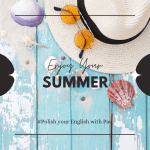Prompt #1
Prepare a multiple-choice quiz which will prepare students for this part of the exam (COPY AND PASTE RELEVANT EXAM PART). Include as many questions as possible (50 or more). Present the test in a table with 7 columns. Column 1 should include the question, columns 2-5 should include one of the answers, e.g., Column 2: Answer 1, Column 3: Answer 2, etc., column 6 should indicate how much time students have to answer in seconds (=20 ), and column 7 should include the correct answer number. Do not include question numbers.
Prompt #2
The task is for my B1 Preliminary prep group. Here’s a sample task (upload an image or copy and paste the task). I’d like you to change the teacher’s name to Miss Paulina. First, say that I’m planning a special lesson for Halloween. Give the students the choice between watching a horror movie or having a Halloween party. Say that you would like every student to bring a snack to class, and ask the student what they would like to bring. Finally, ask the students if they choose the movie, what movie they would like to see, and if they choose a party, what kind of music they would like to listen to.

From Cambridge University Press, B1 Preliminary 1, Test 3, p. 54.
Prompt #3
Here are sample transformations: COPY AND PASTE TRANSFORMATIONS.
INSTRUCTIONS
Complete the second sentence so that it has a similar meaning to the first sentence, using the word given. Do not change the word given. You must use between two and five words, including the word given.
| 1. | A very friendly taxi driver drove us into town.
DRIVEN We ………. a very friendly taxi driver. |
1. | were DRIVEN I into town by |
| 2. | They didn’t sell many programmes at the match.
INSTEAD Very ……….at the match last Saturday. |
2. | FEW programmes | were sold |
| 3. | We got to work late because we decided to drive rather than take the train.
INSTEAD We got to work late because we decided to drive ………. the train. |
3. | INSTEAD of I taking/catching / getting |
| 4. | Last Friday was the first time my car ever broke down, even though it is very old.
NEVER Until last Friday, my car ………. down, even though it is very old. |
4. | had/’d NEVER broken |
| 5. | ‘All your complaints will be investigated by my staff tomorrow,’ said the bank manager.
LOOK The bank manager promised that his staff ………. all our complaints the next day. |
5. | would LOOK into/at |
| 6. | Last year the heavy rain caused the postponement of the tennis tournament.
BECAUSE Last year the tennis tournament ………. so heavily, |
6. | was/got postponed | BECAUSE it rained |
| 7. | Jack does not want to work for his uncle any longer.
CARRY John does not want ………. for his uncle. |
7. | to CARRY on working |
| 8. | Paula can’t wait to hear the band’s new album.
FORWARD Paula is really ………. the band’s new album. |
8. | looking forward | to hearing |
| 9. | Buying a daily newspaper seems pointless to me.
POINT I can’t ……… a daily newspaper. |
9. | see the POINT| in/of buying OR see any POINT| (in) buying |
| 10. | Daniel thought the flight would be more expensive than it actually was.
NOT The flight ……… as Daniel thought it would be. |
10. | was not | as/so expensive |
| 11. | It’s a shame I’m not able to come to your party on Saturday.
COULD I ………. to your party on Saturday. |
11. | wish | (that) I COULD come |
| 12. | There were no trainers left in Denzel’s size anywhere on the website.
SOLD The website had ………. trainers in Denzel’s size. |
12. | (completely) SOLD out | of (the) |
| 13. | Gwenda deleted her sister’s photographs by accident.
MEAN Gwenda ………. her sister’s photographs. |
13. | didn’t/did not MEAN | to delete |
THE TASK
Part 4 consists of six questions. Each question contains three parts: a lead-in sentence, a key word, and a second sentence of which only the beginning and end are given. Candidates have to fill the gap in the second sentence so that the completed sentence is similar in meaning to the lead-in sentence. The gap must be filled with between two and five words, one of which must be the key word. The key word must not be changed in any way.
In this part of the test the focus is both lexical and grammatical and a range of structures is tested. The ability to express a message in a different way shows flexibility and resource in the use of language.
The mark scheme splits the answer into two parts and candidates gain one mark for each part which is correct.
HOW TO APPROACH THE TASK
In preparing for this part of the test, give your students practice in paraphrasing. This might include rewriting sentences from texts, saying things again ‘in other words’, as well as working on lexical synonyms and grammatical transformations. In the examination, they must make sure that the answer makes the second sentence mean, as far as possible, the same as the lead-in sentence.
Remind your students that the answer must consist of two, three, four or five words. If candidates write more than five words they will not be awarded the marks.
Remind your students that they must use the key word in their answer and they must not change it in any way. If they do not use it or if they alter it, they will not be awarded the marks.
Make sure your students pay careful attention to any verb in the final part of the second sentence as it will often indicate whether to use a singular or plural noun in the answer.
Remind your students that when typing or writing their answers, they should not write the whole or part of the second sentence; they should write the words that are needed to fill the gap, including the key word.
When they are counting the words, students should remember that, as in Part 2, they must count contracted words (with the exception of can’t = cannot) as the full form (e.g. didn’t = two words did not).
Source: B2 First Handbook for Teachers For Exams
Could you create a set of 25 transformations for B2 First that will focus on verb patterns (verbs followed by gerunds, infinitives with and without to) and level-appropriate vocabulary related to music and sports?
Prompt #4
I want to turn these transformations into a fun revision quiz for students to have fun with at the end of the lesson. ACTIVITY: Each time I type ‘ñ’, I want you to provide “a teen-friendly transformation”. If the students fail to give you a correct answer, show them a hint so that my students can guess the right answer. DO NOT disclose the answer until after the second attempt has been made. When generating a new one, DO NOT REPEAT PREVIOUS questions. We are playing in three groups, can you keep the score, please? If the group answers at the first attempt, they should get 10 points, if they answer after seeing the set of clues, they get 5 points. OK? The groups will follow this order, A, B, C, A, B, C, A, B, C, etc.
Prompt #5
Here’s the B2 Writing assessment scale for B2 First and B2 First for Schools: (Copy and paste the Cambridge Writing Assessment Scale from the Handbook).
Could you use it to help me assess a student’s piece of writing? Please bear in mind that Band 3 represents the B2 pass level; if a student’s writing in any of the 4 areas is C1, then it’s Band 5, and when it’s B1, it’s Band 1.
Please assess this writing and provide a short overall comment in examiner style (like the Cambridge sample scripts), and provide a student-friendly summary.
Prompt #6
I’m preparing my B1 prep students for this task. COPY AND PASTE THE TASK
Part 6
Questions 27 – 32
For each question, write the correct answer.
Write one word for each gap.
Our new skatepark!
by Jack Fletcher
Is there a great skatepark in your town? We’ve now got the (27) ………… fantastic skatepark ever, and it’s all because of my friends and me!
Our old skatepark was full of broken equipment, so none of us ever went there. But we all agreed that (28) ………… we had a better skatepark in our town, we’d use it. And teenagers might come (29) ………… other towns to join us, too.
So I set up an online questionnaire to find out (30) ………… local people wanted. I asked them whether we should improve our old skatepark (31) ………… build a completely new one. People voted to build a new one.
Then we held some events to get money to pay for it. In the end we collected half the cost, and the local council paid the rest. It (32) ………… finally finished last month. So come and try it – you’ll have a great time!
Source: B1 Preliminary for Schools Handbook for Teachers For Exams
The problem is, they’re quite weak, and I need to scaffold it a little bit for them. Can you help me, please?
Download the handout here 🙂


















 Pre-listening Activities
Pre-listening Activities Pre-listening Activities
Pre-listening Activities Swimsuits – The Perfect Beach Attire
Swimsuits – The Perfect Beach Attire Summer Holiday
Summer Holiday
